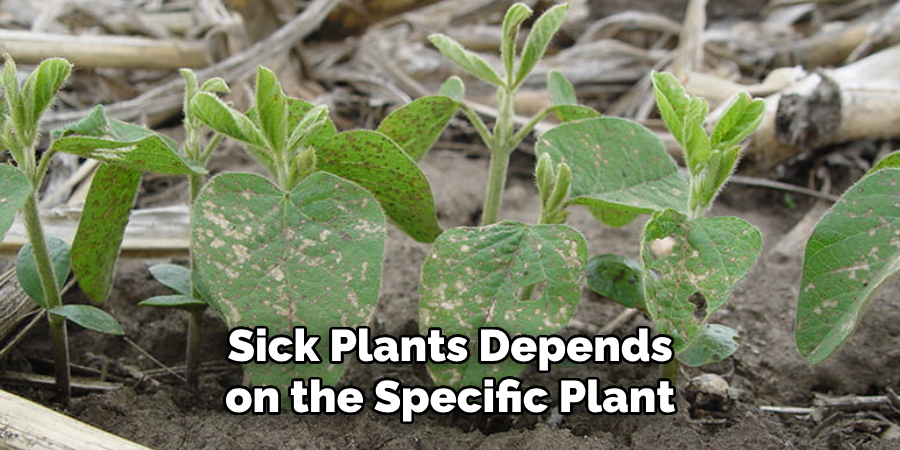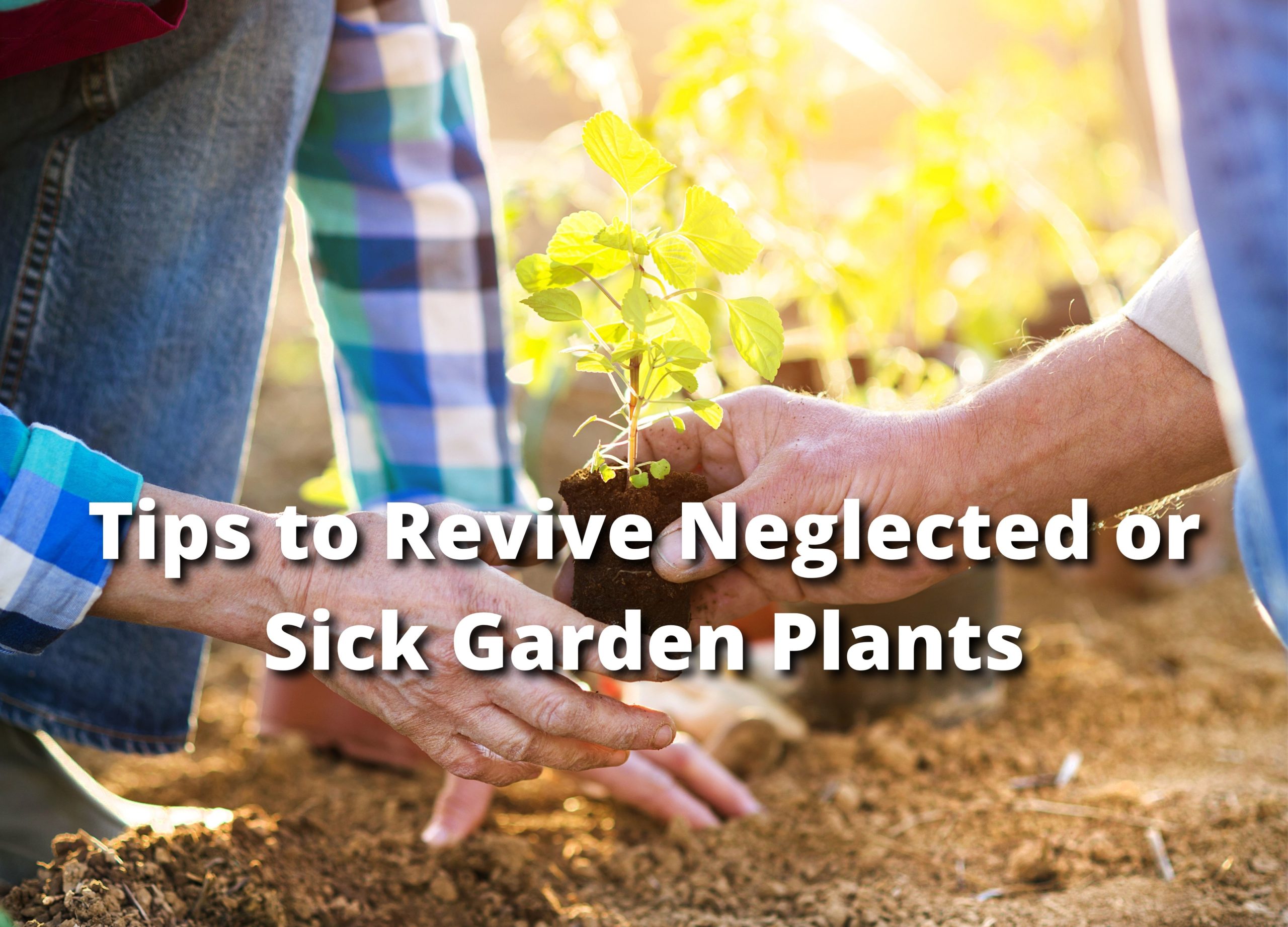To heal sick plants, you can first diagnose the problem by examining the plant’s leaves for discoloration or damage, checking the soil for moisture levels, and looking for any signs of pests or diseases. Once you have identified the issue, take appropriate action by providing the plant with the necessary nutrients, adjusting watering and light conditions, and treating any pests or diseases.
Additionally, pruning any dead or damaged parts of the plant can help promote new growth and overall plant health. Remember to regularly monitor and care for your plants to prevent future sickness.

Credit: www.nytimes.com
How to Heal Sick Plants: Step by Step Guide
Identifying Signs Of Sick Plants
Identifying signs of sick plants is crucial for effective healing. Wilting leaves indicate potential health issues. Discoloration or yellowing can also signal plant sickness. Stunted growth may be an indication of underlying problems. Keep an eye out for leaf spots or lesions, as they can be symptoms of disease.
Another sign of sick plants is pest infestation. Identifying these signs early on allows for timely intervention and effective healing of sick plants. Regular monitoring and quick action can help restore the health and vitality of your plants. Remember, healthy plants contribute to a vibrant and thriving garden.
Common Causes Of Plant Illness
Plant illnesses can be caused by poor drainage and overwatering, leading to root rot. Indoor plants can suffer from a lack of sunlight or excessive shade, hindering their growth. Nutrient deficiencies, such as lack of iron or potassium, can weaken plants and make them susceptible to diseases.
Soil ph imbalance affects nutrient availability, affecting plant health and growth. Invasive weeds compete for nutrients and water, stunting the growth of neighboring plants. To heal sick plants, ensure proper drainage, water in moderation, provide adequate sunlight, and address nutrient deficiencies.
Adjusting soil ph and removing invasive weeds will also contribute to their recovery. Remember to continually monitor your plants’ health and make necessary adjustments for their well-being.
Choosing The Right Location For Your Plants
Choosing the right location for your plants is crucial for their overall health and well-being. Assessing sunlight requirements and ensuring they receive adequate exposure is vital. Keep an eye on drainage and soil composition, as these factors directly impact plant growth.
Avoid placing your plants in areas with known pest or disease problems to prevent any potential issues. By carefully considering these guidelines, you can create an optimal environment for your plants to thrive and heal.
Watering And Moisture Control
Proper watering is crucial for healing sick plants. Take note of the plant’s watering needs to prevent over or under watering. Implement a regular watering schedule to maintain consistent moisture levels. Ensure that the pots or soil have adequate drainage to avoid waterlogged roots.
Consider using mulching techniques to retain moisture and protect the plants from extreme temperatures. By following these guidelines, you can effectively control moisture and promote the healing process for your sick plants.
Improving Soil Fertility And Ph
Improving soil fertility and ph plays a crucial role in healing sick plants. Testing soil nutrient levels helps determine deficiencies. Adding organic matter and compost enriches the soil with essential nutrients. Balancing soil ph is vital for optimal plant growth.
Using natural fertilizers and amendments further improves soil health. By following these steps, you can effectively heal sick plants and promote their overall well-being. Remember, healthy soil leads to healthy plants, so focus on providing the right nutrients and maintaining the ideal ph level for your specific plants.
Take the necessary measures to ensure your plants thrive and recover from any illness or nutrient deficiencies. Your efforts will be rewarded with beautiful, vibrant, and flourishing plants in your garden.
Managing Pests And Diseases
Managing pests and diseases is crucial when it comes to healing sick plants. Identify common pests and diseases to address them effectively. Implement integrated pest management strategies for a comprehensive approach. Opt for organic methods to control pests without harming the environment.
Treat specific plant ailments by employing targeted remedies. Remember that healing sick plants requires diligence and consistent care. So, be proactive in identifying and addressing any issues that arise. By following these guidelines, you can nurse your plants back to health and ensure their longevity.
Take the necessary steps to create a pest-free and disease-free environment for your beloved plants.
Pruning And Plant Maintenance
Proper pruning is essential for maintaining the health of your plants. By understanding the importance of pruning, you can promote growth and prevent diseases. When pruning, utilize techniques such as removing dead and infected parts to eliminate potential sources of harm.
Regular plant inspection and care will also help in identifying any issues before they become severe. Keeping a close eye on your plants ensures that you can provide the necessary assistance they require. Remember, healthy plants are less susceptible to diseases, making pruning and maintenance a crucial aspect of plant care.
So, take the time to prune your plants correctly and maintain their overall well-being.
Strengthening Plant Immunity
Strengthening plant immunity is crucial for the health and well-being of your garden. By selecting disease-resistant plant varieties, you can ensure that your plants have a better chance of fighting off infections and staying healthy. However, it’s not just about the plants you choose; proper care is essential too.
Providing your plants with the right nutrients, water, and sunlight will boost their immune system naturally. Additionally, you can enhance their defense mechanisms by using organic pest control methods and avoiding harsh chemicals. Remember, a healthy plant is better equipped to fight off diseases and pests.
So, take the time to give your plants the care they deserve, and you’ll see them thrive in your garden.
Frequently Asked Questions Of How To Heal Sick Plants
Can Houseplants Be Saved If They Start Wilting?
Yes, houseplants can usually be saved if they start wilting. Some common causes of wilting include overwatering, underwatering, insufficient light, or pests. To revive a wilting plant, adjust watering, provide appropriate light, check for pests, and consider repotting if necessary.
What Are Some Natural Remedies For Plant Diseases?
There are several natural remedies for plant diseases. One option is to use a mixture of water and neem oil to combat fungal infections. Another option is to apply a solution of diluted hydrogen peroxide to control bacterial diseases. Additionally, beneficial insects, such as ladybugs, can help control pests that cause plant diseases.
How Often Should I Fertilize My Sick Plants?
The frequency of fertilizer application for sick plants depends on the specific plant and its individual needs. As a general rule, it is best to follow the instructions provided on the fertilizer packaging. Over-fertilization can stress sick plants further, so it’s important to use fertilizers in moderation and observe the plant’s response carefully.

Conclusion
Reviving sick plants can be a rewarding and fulfilling journey. By implementing the right techniques and taking care of the underlying issues, you have the power to nurse your plants back to health. Remember to identify the specific problems your plants are facing, whether it be nutrient deficiencies, pests, or diseases, and address them accordingly.
Providing the right amount of sunlight, water, and nutrients is crucial for their recovery. Regularly monitor and observe your plants’ progress, adjusting your care routine as needed. Remember, patience is key, as healing plants takes time. By following these steps and giving your plants the attention and care they deserve, you can revive them and create a thriving garden that brings beauty and joy to your life.

